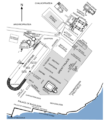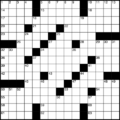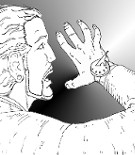Template:Selected anniversaries/January 18: Difference between revisions
No edit summary |
No edit summary |
||
| Line 16: | Line 16: | ||
File:Henri Victor Regnault 1860s.jpg|link=Henri Victor Regnault (nonfiction)|1855: Chemist, physicist, and crime-fighter [[Henri Victor Regnault (nonfiction)|Henri Victor Regnault]] uses his careful measurements of the thermal properties of gases to detect and prevent [[crimes against chemistry]]. | File:Henri Victor Regnault 1860s.jpg|link=Henri Victor Regnault (nonfiction)|1855: Chemist, physicist, and crime-fighter [[Henri Victor Regnault (nonfiction)|Henri Victor Regnault]] uses his careful measurements of the thermal properties of gases to detect and prevent [[crimes against chemistry]]. | ||
||Daniel Hale Williams | ||1856: Daniel Hale Williams born ... surgeon, who in 1893 performed the second documented successful pericardium surgery to repair a wound in the United States of America. He also founded Provident Hospital---the first non-segregated hospital in the United States---in Chicago, Illinois. | ||
||Luigi Bianchi | ||1856: Luigi Bianchi born ... mathematician. Pic. | ||
File:Charles Dupin.jpg|link=Charles Dupin (nonfiction)|1873: Mathematician, engineer, cartographer, economist, and politician [[Charles Dupin (nonfiction)|Charles Dupin]] dies. In 1826 created the earliest known choropleth map. | File:Charles Dupin.jpg|link=Charles Dupin (nonfiction)|1873: Mathematician, engineer, cartographer, economist, and politician [[Charles Dupin (nonfiction)|Charles Dupin]] dies. In 1826 created the earliest known choropleth map. | ||
| Line 42: | Line 42: | ||
File:Jacob Bronowski.jpg|link=Jacob Bronowski (nonfiction)|1908: Mathematician, historian of science, theatre author, poet, and inventor [[Jacob Bronowski (nonfiction)|Jacob Bronowski]] born. | File:Jacob Bronowski.jpg|link=Jacob Bronowski (nonfiction)|1908: Mathematician, historian of science, theatre author, poet, and inventor [[Jacob Bronowski (nonfiction)|Jacob Bronowski]] born. | ||
||1911 | ||1911: Eugene B. Ely lands on the deck of the USS Pennsylvania stationed in San Francisco Bay, the first time an aircraft landed on a ship. | ||
||Shoichi Sakata | ||1911: Shoichi Sakata born ... physicist who was internationally known for theoretical work on the structure of the atom. He proposed the Sakata model, which was an early precursor to the quark model. After the end of World War II, he joined other physicists in campaigning for the peaceful uses of nuclear power. | ||
||1921 – Yoichiro Nambu, Japanese-American physicist and academic, Nobel Prize laureate (d. 2015) | ||1921 – Yoichiro Nambu, Japanese-American physicist and academic, Nobel Prize laureate (d. 2015) | ||
| Line 59: | Line 59: | ||
||1955: Rodica Eugenia Simion born ... mathematician. She was the Columbian School Professor of Mathematics at George Washington University. Her research concerned combinatorics: she was a pioneer in the study of permutation patterns, and an expert on noncrossing partitions. Pic: https://gilkalai.wordpress.com/2010/01/07/rodica-simion-immigrant-complex/ | ||1955: Rodica Eugenia Simion born ... mathematician. She was the Columbian School Professor of Mathematics at George Washington University. Her research concerned combinatorics: she was a pioneer in the study of permutation patterns, and an expert on noncrossing partitions. Pic: https://gilkalai.wordpress.com/2010/01/07/rodica-simion-immigrant-complex/ | ||
||1963: Edward Charles Titchmarsh dies ... mathematician. | |||
||1971: Arnold Nordsieck dies ... theoretical physicist. He is best known for his work with Felix Bloch on the infrared problem in quantum electrodynamics. He developed the inertial electrostatic gyroscope (ESG) used as part of the inertial navigation system of nuclear submarines that allows them to remain underwater without having to surface to ascertain their location. Pic: https://www.ion.org/museum/item_view.cfm?cid=2&scid=4&iid=30 | ||1971: Arnold Nordsieck dies ... theoretical physicist. He is best known for his work with Felix Bloch on the infrared problem in quantum electrodynamics. He developed the inertial electrostatic gyroscope (ESG) used as part of the inertial navigation system of nuclear submarines that allows them to remain underwater without having to surface to ascertain their location. Pic: https://www.ion.org/museum/item_view.cfm?cid=2&scid=4&iid=30 | ||
Revision as of 10:30, 28 December 2018
532: The Nika riots fail in Constantinople. Nearly half the city is burned or otherwise destroyed, and tens of thousands of people are dead.
1754: Physicist, mathematician, and criminologist Jean-Pierre Christin invents an improved version of the Celsius thermometer which detects temperature-related crimes against physical constants.
1825: Chemist Edward Frankland born. He will be one of the originators of organometallic chemistry, introducing the concept of combining power or valence.
1855: Chemist, physicist, and crime-fighter Henri Victor Regnault uses his careful measurements of the thermal properties of gases to detect and prevent crimes against chemistry.
1873: Mathematician, engineer, cartographer, economist, and politician Charles Dupin dies. In 1826 created the earliest known choropleth map.
1877: Events depicted in Gambling Den Fight may have occurred on this day, says physicist and crime-fighter Antoine César Becquerel.
1878: Physicist and academic Antoine César Becquerel dies. He pioneered the study of electric and luminescent phenomena.
1908: Mathematician, historian of science, theatre author, poet, and inventor Jacob Bronowski born.
1924: First use of crossword puzzles powered by Gnomon algorithm functions to detect and prevent crimes against mathematical constants.
1937: Enrico Fermi invents new class of Gnomon algorithms which reverse effects of certain crimes against mathematical constants.










